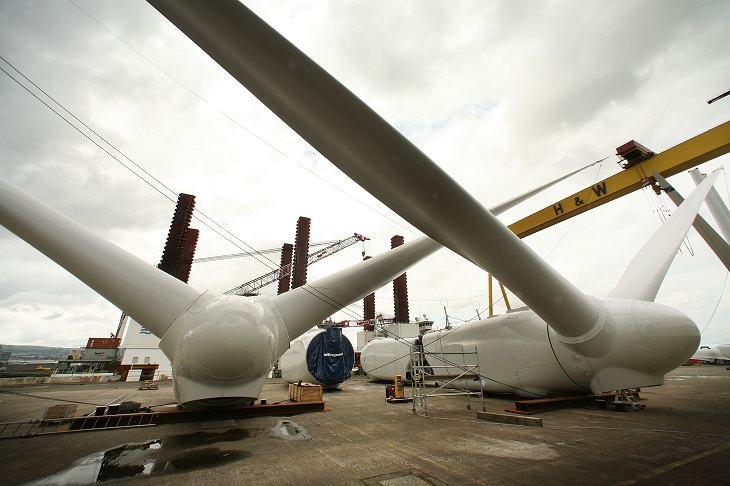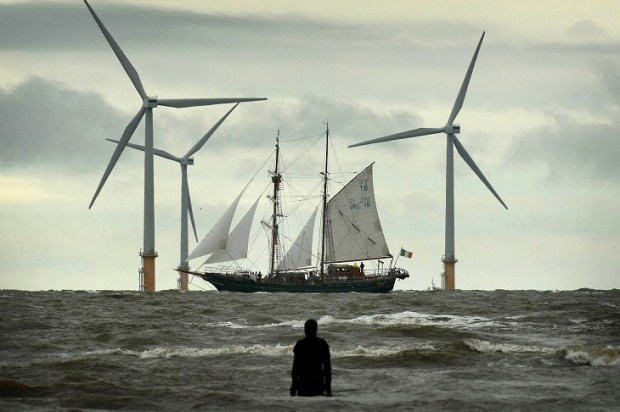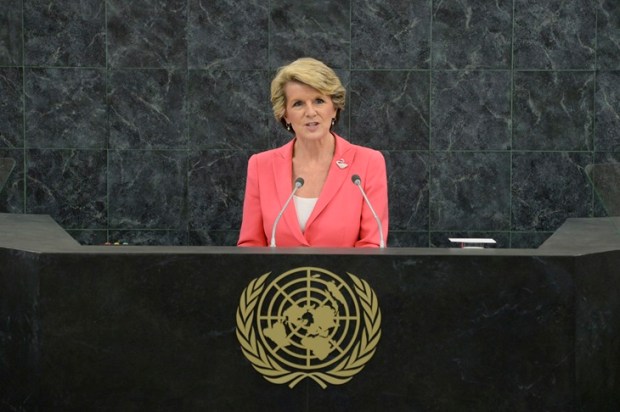According to the Discovery Channel, there are around 400,000 individual wind turbines in operation. Every single one of these will be looking for a grave in the nearest landfill within 20 years (or sooner).
What’s the carbon footprint of this mess? Who knows. The government doesn’t care and it isn’t factored into any of their Net Zero budgets.
Of more interest is what happens to these monstrous, sky-scraper-sized entities after their blades stop turning. The concern is that they going to be left to rot and rust in the world’s oceans, farms, and national parks with their parent companies quietly vanishing leaving taxpayers to fund their removal.
If you thought the renewable transition budget was steep at several trillion dollars – it’s going to be a wild ride for the Treasury on the way back down.
Desperate to preserve the green credentials of this increasingly gangrenous industry, a new word has emerged: ‘Repowering’.
Telling a community of green-minded people that you’re going to rip out busted wind turbines after 20 years and build the whole thing again while carting the old turbines off to landfill doesn’t sound very – well – green. But if you’re ‘repowering’ a wind farm… Who doesn’t want to feel ‘powerful’?
Repowering consists of, according to one company interested in the market, ‘replacing (partially or totally) the old turbines with more powerful and efficient models’.
The same website claims that less than 10 per cent of Europe’s wind turbines are being repowered because of ‘slow and complex authorisation procedures’ and the different opinions of countries. Weird. If wind turbines were built to stave off an imminent world-ending climate apocalypse, why are those same virtuous European bureaucracies squabbling so much?
We didn’t see this much disunity when Bruce Willis was sent in to stop the asteroid.
Hilariously, one of the stated benefits of repowering a wind farm is ‘decarbonisation’. Forgive us, but isn’t the whole point of a wind farm to ‘decarbonise the energy sector’? How can you decarbonise something that is already decarbonised? Does the landfill decarbonise it?
Stop laughing.
There’s a harebrained idea hopping around to use wind turbines to ‘suck carbon dioxide out of the air and store it under the ocean’. Imagine giant spinning machete carbon dioxide vacuums. No doubt the plants trying to use that carbon dioxide as fuel will be thrilled.
You’ve heard of the roaring success of Australia’s ‘pumped hydro’, well this is ‘pumped carbon’.
According to the Conversation:
‘If direct air capture systems were built alongside offshore wind turbines, they would have an immediate source of clean energy from excess wind power and could pipe captured carbon dioxide directly to storage beneath the sea floor below, reducing the need for extensive pipeline systems.’
As reported in the Carbon Herald, (no, I didn’t make that up), simulations on these carbon-sucking turbines were presented all the way back in 2021 at the American Physical Society’s Division of Fluid Dynamics.
It’s part of a wider field of carbon-capture devices that businesses are wasting their time and money on instead of creating cheap, reliable power for taxpayers in the middle of a financial crisis riddled with energy shortages and blackouts directly caused by under-performing renewable energy.
In a strange twist, the same publication is carrying an article this week titled, US DOE Backs Nuclear Studies For Carbon Removal Solutions in which the US Department of Energy is exploring nuclear energy as a means of removing carbon.
‘[The project would] capture of gas from ambient air, which could then be stored underground or used as feedstock for sustainable aviation fuels. This project has received funding of $2.554 million from the DOE, combined with additional funding of $762,827 from other sources, resulting in a total value of slightly more than $3.3 million.’
It seems our energy-generating technologies are being used to do everything except generate energy.
When it comes to polishing the virtue of repowering, there is a lot being said about the installation of 93 huge new wind turbines in the Dutch repowering Windplan Groen project – and almost nothing about the fate of the 90 old wind turbines that were ripped out.
Far from being environmentally friendly, these repowered turbines have been ordered to shut down for part of the year due to concerns over bird breeding areas and fears the water could end up covered in little endangered feathers. We are left to wonder if the energy gains from bigger turbines are subsequently lost through migratory bird shut downs…
This doesn’t answer the mystery of decommissioned, building-sized wind turbines.
What we do know is that the wind industry has recently asked for a Europe-wide ban to be placed on wind turbine blades entering landfill by 2025 – which means that many are currently ending up there.
(We are using Europe as the example rather than Australia because Chris Bowen is too busy fighting enraged local communities over the construction of wind farms to be bothered about their inevitable decommission.)
It is estimated that in Europe alone, 25,000 tonnes of wind turbine blades will be ripped out and enter landfill by 2025 if nothing is done. By 2030, Italy, France, and Denmark are expected to add a further 52,000 tonnes. Remember, these are the smaller turbines that were installed first – not the monsters we are putting in today.
Wind Europe’s CEO said:
‘Wind energy is a green technology. Sustainability is part of our DNA. That’s why we are constantly striving to further reduce our impact on the environment. A ban on landfilling wind turbine blades will help accelerate the development of sustainable recycling technologies. Austria, Finland, Germany, and the Netherlands already have a landfill ban in place. But we call upon the European Commission to propose a harmonised European approach.’
Search for statistics on wind turbine blades in landfill or images of these virtuous, planet-saving technologies at the end of their life and you’ll be hard-pressed to find anything. The dark side of renewable energy is being buried – not only in landfill – but by feel-good propaganda and corporate ‘action plans’ that talk endlessly about ‘future ideas’ and very little about the current problem created by their rushed ideology.
‘At the moment, we have to start right at the beginning again,’ said one local, of the Scottish repowering program. ScottishPower is tearing out the old 16MW, 28-year-old wind farm and building it from scratch. While the community is ‘really supportive’ there is once again no mention of the fate of the turbines in the flurry of media articles.
Wind energy is not only held back by the stain of its growing piles of rubbish that make the plastic bag problem look like nothing – the waste of rare materials is a serious concern.
Technology with a maximum 20-year life makes it the firefly of the energy world. Wind farms live and die four, five, or even six times in the span of one nuclear reactor.
The footprint of a wind turbine compared to a nuclear power plant is terrifying for anyone who cares about the planet rather than the vacuous campaign slogans used by the political class. Adding carbon-sucking-and-pumping technology to this mix is likely to add to the problem of waste rather than help.
Industry regulators have been forced to impose ‘recycle demands’ on wind farms which, instead of fixing the problem (mostly because it cannot be fixed), has instead made those projects exponentially more expensive.
Who pays?
You pay. Wind energy is a taxpayer vanity project designed to alleviate public guilt and climate anxiety rather than produce reliable, efficient energy.
Flat White is written and edited by Alexandra Marshall.
Got something to add? Join the discussion and comment below.
Get 10 issues for just $10
Subscribe to The Spectator Australia today for the next 10 magazine issues, plus full online access, for just $10.


























Comments
Don't miss out
Join the conversation with other Spectator Australia readers. Subscribe to leave a comment.
SUBSCRIBEAlready a subscriber? Log in